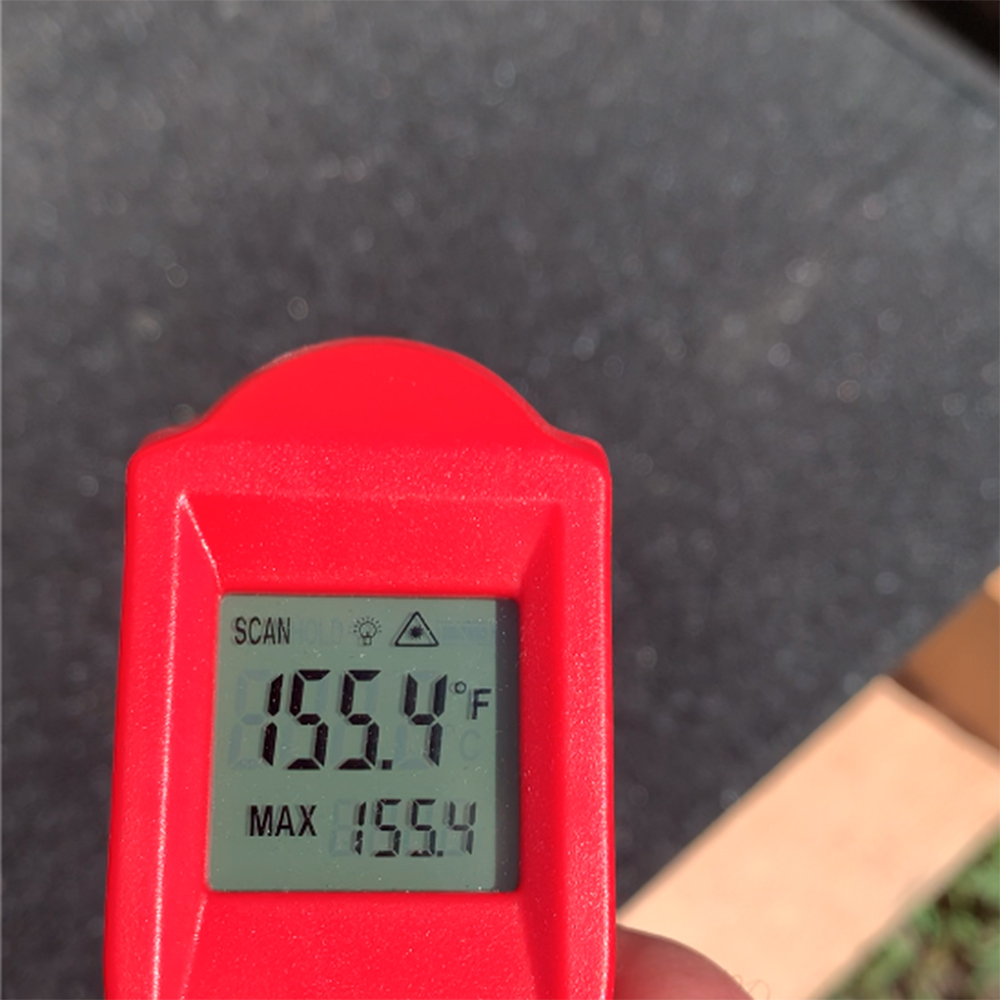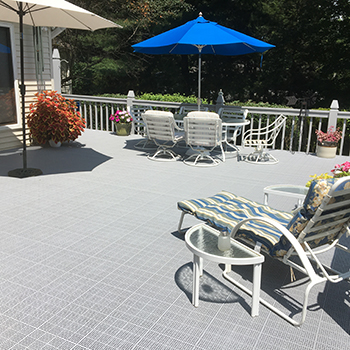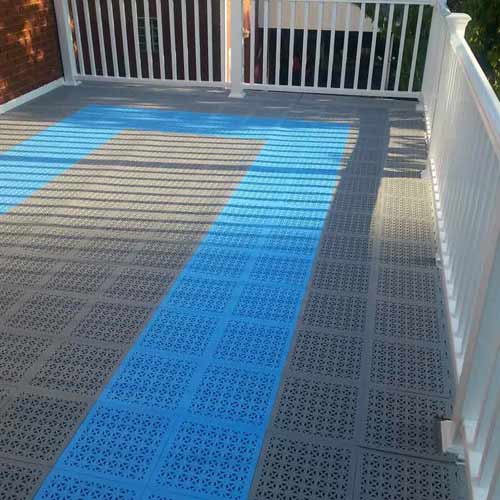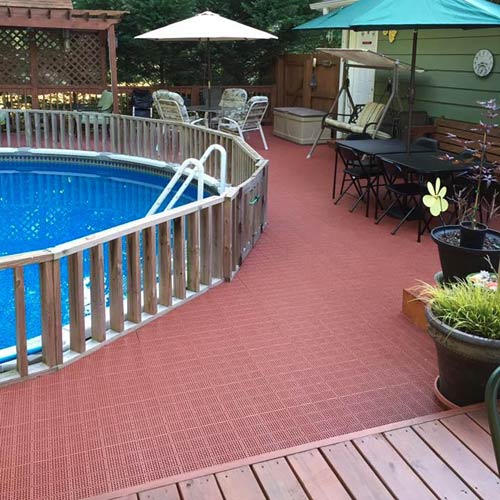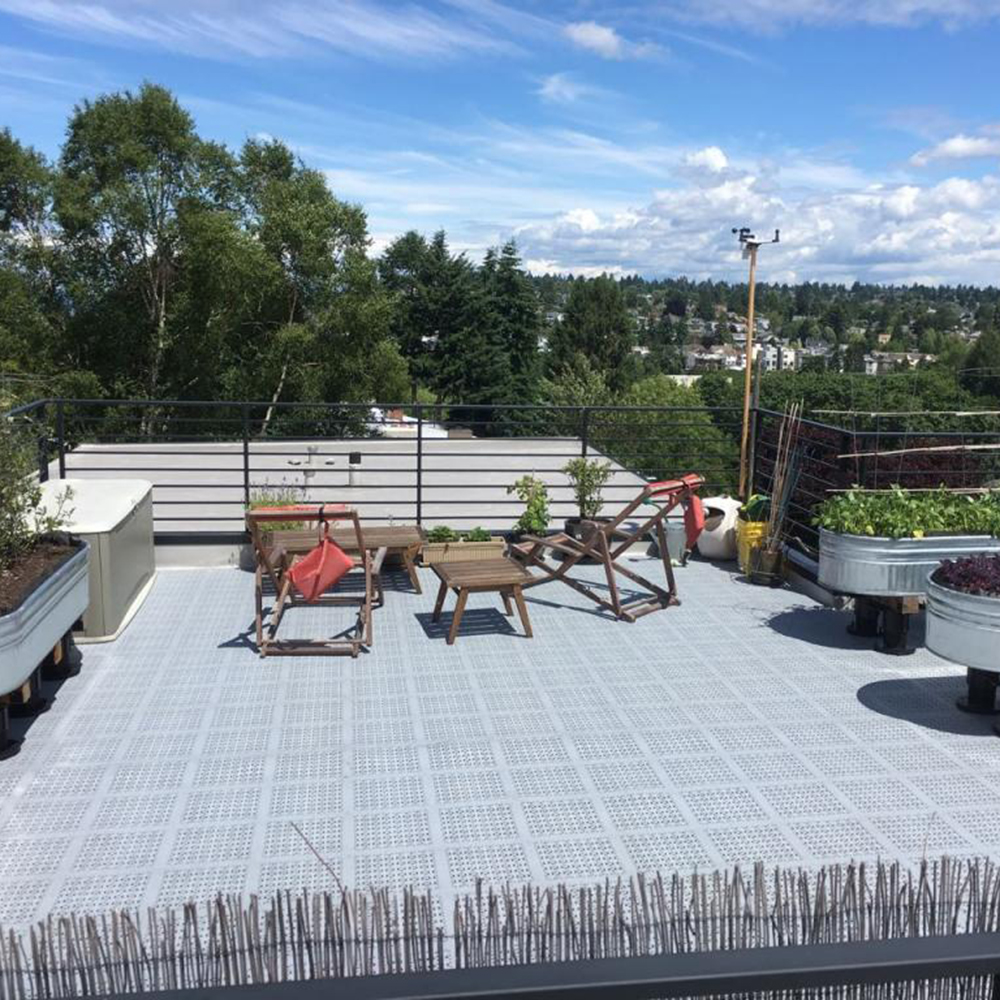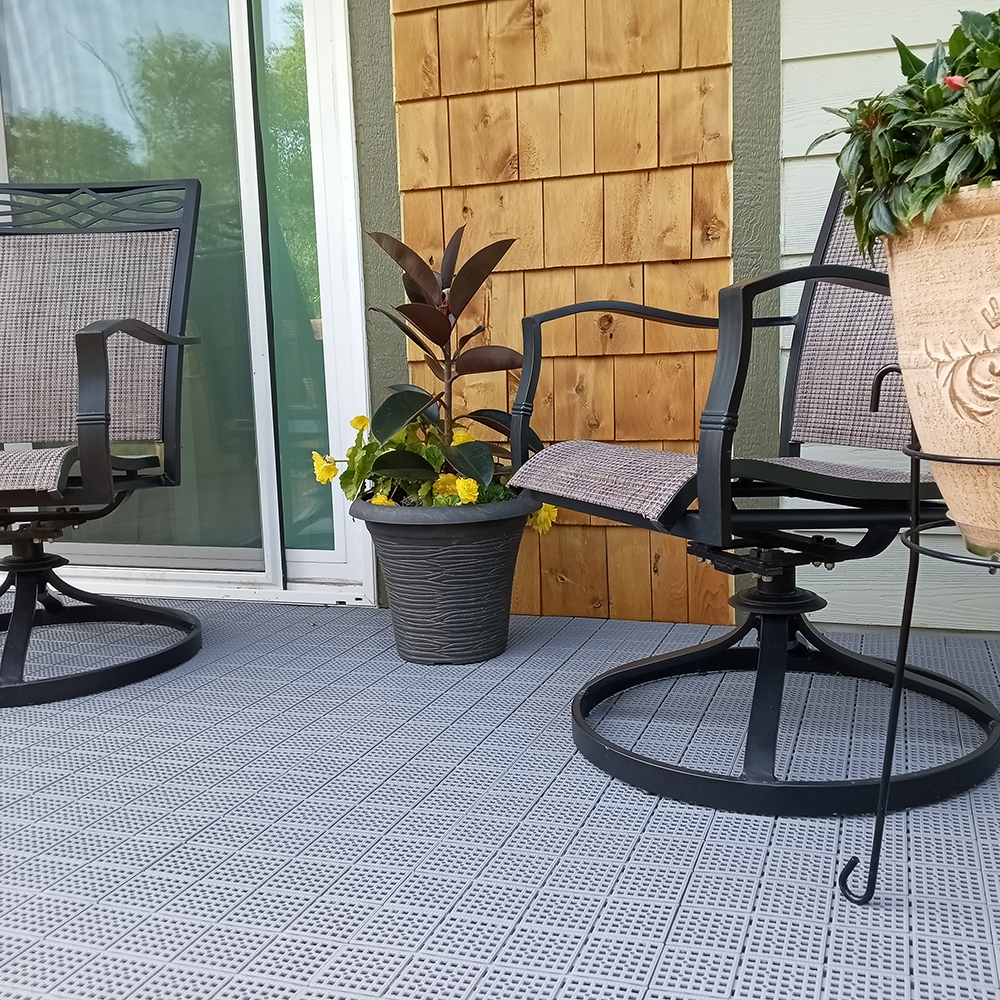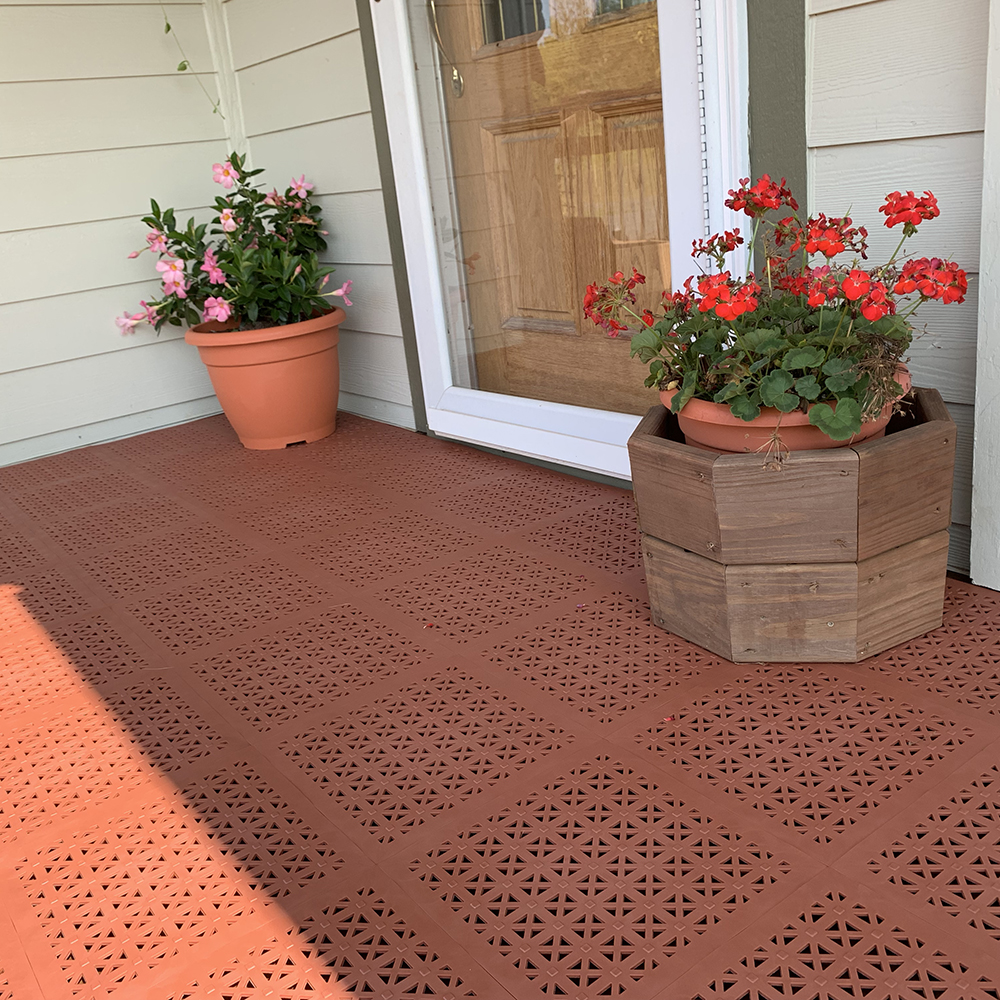What Decking Doesn't Get Hot?
Related Product: StayLock Tile Perforated Colors 9/16 Inch x 1x1 Ft.
However, the color, density and design of the product can have a significant impact on just how much the decking heats up and how long it will retain that heat.
In an effort to find which Greatmats deck surfacing product stays coolest outdoors, we conducted an unofficial test of several different products as well as several different colors of those products.
Decking Temperature Test (Unofficial) Parameters
- Direct sunlight for at least 4 hours
- Outdoor temperature ranges from 81 °F and 83 °F
- Variety of different decking materials
- Variety of different styles of decking products
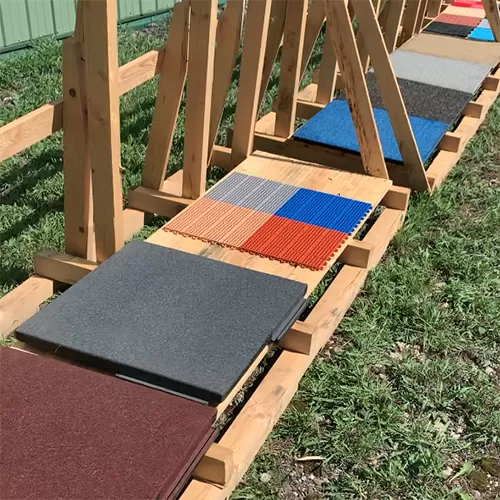
Each deck tile was left in direct sun for at least 4 hours (at our office in Milltown, Wisconsin) and the surface temperature of the tile was recorded using an infrared thermometer when the outdoor temperature was between 81 and 83 degrees Fahrenheit.
Keep in mind not all products were tested on the same day, so there may be some other factors at play, including humidity and breeze.
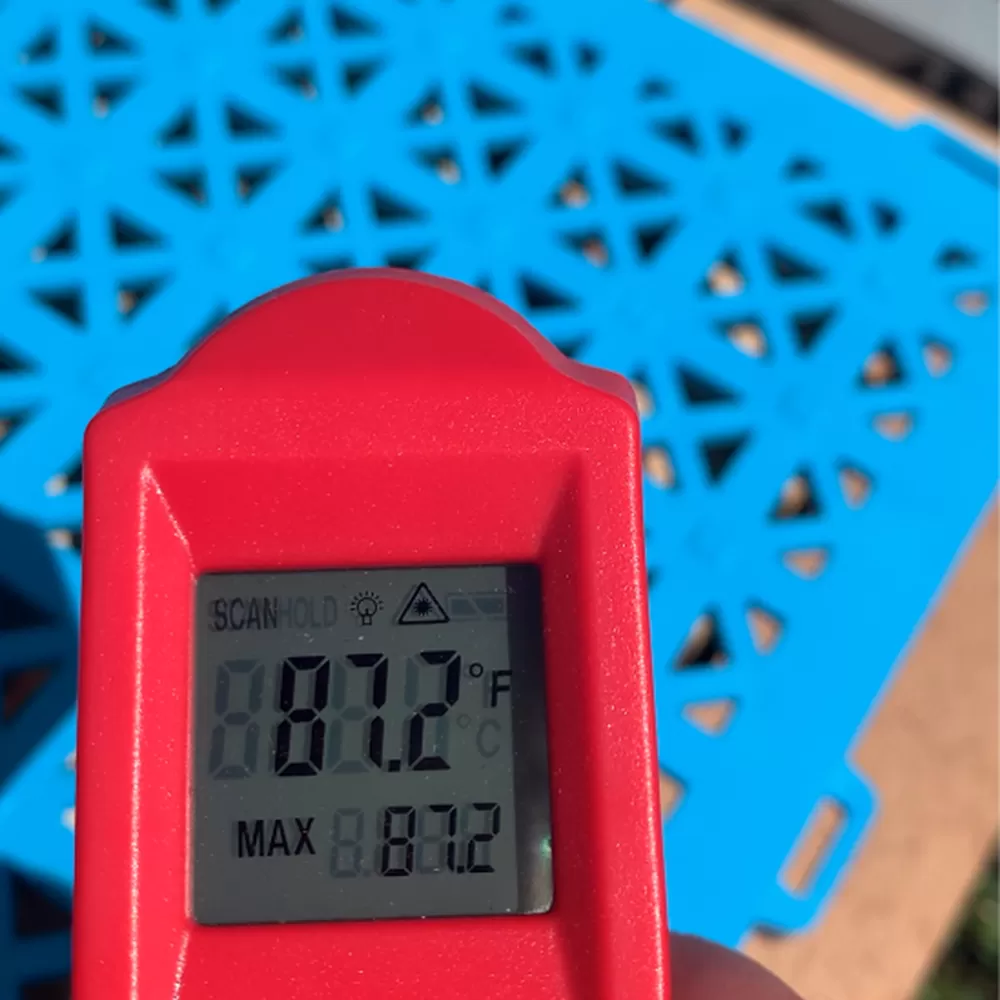
5 Products Tested
1. PVC Deck Tiles
Our perforated PVC products with a raised base remained coolest, ranging from 87 degrees for a light blue colored product to 123 degrees for a black one.
2. Polypropylene Deck Tiles
The next best option was a polypropylene tile that was also perforated with a raised base. The temperatures recorded for these tiles ranged from 95 degrees for a red color to 111 degrees for black.
3. Outdoor Turf Tiles
We also tested two different outdoor turf tiles, both with rubber bases of different thicknesses. These tiles ranged from 107 for the 1 inch thick tile to 124 degrees for a 2.5 inch thick rubber based turf tile.
4. Outdoor Rubber Tiles
Rubber surfaces heated up by far the most, ranging from 124 degrees to 155 degrees. The rubber tiles tested also ranged from 1 inch to 2.75 inches thick. The 1 inch thick products remained the coolest (124-136 degrees), especially with a higher percentage of color vs black. The 2.75 inch thick tiles heated up the most (136-155 degrees) with black again claiming the crown as the hottest.
5. Sheet Vinyl
Just for fun, we also tested the LonDeck Sol Vinyl Rolls with CoolTouch technology. This unique 2mm thick outdoor vinyl product stayed on par with the perforated plastic tiles, recording max temperatures of between 92 and 101 degrees Fahrenheit, depending on the color. (The Clay Dust color tested the coolest.)
Please note that this flooring is suitable for permanent installations only, as it requires a glue down installation and seam sealing by a professional.
Temperature Test Conclusion
Among the products tested were those made from rubber, PVC, polypropylene and artificial turf. Some products were solid. Others were perforated, and some had a raised base.As a general rule, Raised Perforated Plastic Tiles remained the coolest.
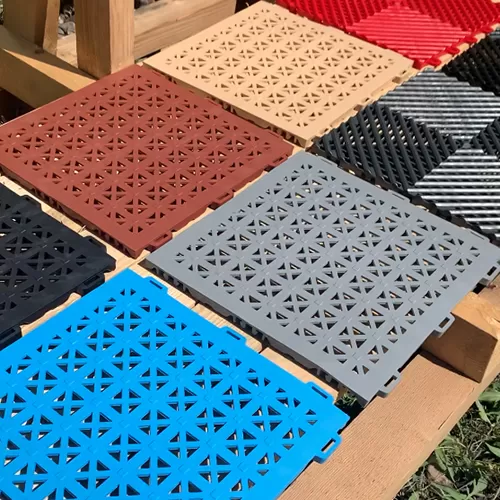
| PVC | Polypropylene | Turf | Rubber | Sheet Vinyl |
|---|---|---|---|---|
| Raised Base | Raised Base | Rubber Base | Rubber Base | 2mm Flat |
| Perforated | Perforated | Solid | Solid | Solid |
| 87° - Blue | 95° - Red | 107° - 1 inch | 124-136° - 1 inch | 92° - Clay Dust |
| 123° - Black | 111° - Black | 124° - 2.5 inch | 136-155° - 2.75 inch | 101° - Overcast |
Recommended Cooler Decking Products
- StayLock Tile Perforated Colors
- Patio Outdoor Tile
- For Commercial Installations - LonDeck Sol Vinyl Rolls with CoolTouch technology
Keeping Your Decking Cool
When using any of these products, you can take additional steps to ensure your decking remains cool.Providing shade is the best option as it does not allow the sun’s rays heat the material to a point where it is too hot to walk on.
If shade is not an option, hosing the deck down with water is a great way to temporarily cool the outdoor flooring as all of these products are waterproof.
Remember lighter colors do not heat up as much as darker colors and less dense materials will not heat up as much as more dense materials. So if you’re trying to pick a decking surface that doesn’t get hot, it’s a good idea to go light colored and lightweight.
Each Material Provides Different Benefits Including
- Cushioning
- Impact Absorption/Resistance
- Scratch Resistance
- Crush Resistance
- Drainage
- And more!
